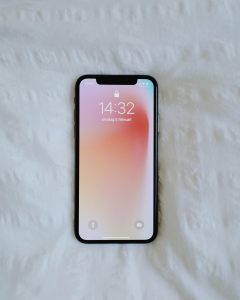Pornography is one of those things that most of us will agree on what it is when we see it. Whether it is pictures on your phone, videos on your tablet, or magazines, pornography is designed to titillate and stir sexual desires through nudity or the portrayal of people having sex. And pornography is everywhere. For those struggling with its impact, seeking guidance through Christian Counseling Pasadena can be a helpful step in addressing the emotional and spiritual challenges it may present.
 The ubiquity of porn comes through its ease of accessibility, affordability, and anonymity. You can find porn on the internet at the click of a button on a mobile device in your pocket, and you can do so without people knowing you’re accessing it, all for free. This makes getting porn and pornographic material the easiest it’s been in human history.
The ubiquity of porn comes through its ease of accessibility, affordability, and anonymity. You can find porn on the internet at the click of a button on a mobile device in your pocket, and you can do so without people knowing you’re accessing it, all for free. This makes getting porn and pornographic material the easiest it’s been in human history.
Not only is easy access available, but there is just so much of it out there for consumption, and people are actively looking for it. According to some statistics for the United States, thirty-seven porn videos are created every day, 2.5 billion emails containing porn are sent or received daily, a quarter of all search queries generated are related to porn, and over 100,000 queries related to child pornography are received.
While it might be tempting to think that porn usage and addiction is an isolated occurrence, it affects 5-8% of the adult population. About 200,000 Americans are classified as porn addicts. Viewing porn isn’t by any means an exclusively male preserve – about a third of porn viewers are women.
The Church isn’t exempt from these realities, either. According to some statistics, 1 in 5 youth pastors and 1 in 7 senior pastors regularly use pornography – that’s around 50,000 church leaders. Over half of Christian men and around 15% of Christian women say they watch porn at least once a month. Clearly, as human beings, we have collectively taken the remarkable gift of the human body and sex given to us by God and abused it to our detriment.
People who are addicted to porn can spend at least 11-12 hours viewing porn every week. Porn has the effect of potentially distorting social realities and sexual attitudes that have an impact on marriages; one way this happens is that porn use in men typically results in a tendency to withdraw emotionally from the relationship.
Signs of Pornography Addiction
 While the Diagnostic and Statistical Manual for Mental Health Disorders 5th edition (DSM-5) doesn’t list pornography addiction as a diagnosable condition, the reality is that many people struggle with the compulsion to view and use porn, and they can’t stop. This addiction is problematic, especially when it begins interfering with relationships and day-to-day life.
While the Diagnostic and Statistical Manual for Mental Health Disorders 5th edition (DSM-5) doesn’t list pornography addiction as a diagnosable condition, the reality is that many people struggle with the compulsion to view and use porn, and they can’t stop. This addiction is problematic, especially when it begins interfering with relationships and day-to-day life.
The top signs of pornography addiction include:
- Not being able to stop, even engaging in risky behavior to view it, for example at work. A person addicted to pornography wants to stop but feels unable to do so.
- Losing interest in sex with their real-life partner, which causes any number of relationship issues. Their partners may be negatively affected if they feel they can’t compare to adult film stars.
- The individual wants even more porn and will view even more extreme porn to get the same release as before
- The individual demands more and becomes even more unrealistic about real sex. As they watch porn, their expectations around sex may shift. What they view as attractive, including what they think sex should be like. Some people become unable to enjoy sex without first viewing porn
- Feeling frustrated or ashamed after viewing porn but continuing to use it.
- Losing a lot of time on porn, even ignoring other responsibilities, including work, sleep, or family
- Spend money on porn, possibly at the expense of family necessities, and even going into debt to finance their habit and get access to what they consider “high quality” porn.
- Using porn to cope with anxiety, insomnia, or sadness
Causes of Porn Addiction
There isn’t a clear set of causes, but some have pointed to relationship problems, unhealthy cultural norms about sex and sexual behavior, and biological causes such as the change to brain chemistry that occurs when a person views porn. For some people, circumstances such as boredom or loneliness were the starting point of viewing porn, and they got hooked from there.
Help for Addiction
A few self-help tips
There are a few ways you can begin to make strides toward getting rid of your porn addiction. Here are a few tips to help you on your journey:
- Get rid of any hard copies of porn you own (magazines, pictures, books, posters)
- Cancel any memberships or subscriptions you may have to websites or chatrooms
- Have a journal in which you keep track of your setbacks, victories, and strategies that have proved effective in avoiding porn
- When you are tempted to view porn, remind yourself of the damage it has done to you and your family
- Have an accountability partner who will walk with you on your journey, ask you questions about your viewing habits, pray with and counsel you when the going gets rough
- Have a friend, or your accountability partner, install anti-porn software on all your devices. Only they will have the passwords to the software, and if you view porn, what you’ve seen will be reported back to them.
- Delete all your soft copies of porn, and remove any tabs or bookmarks for websites
- Reflect on whether there are triggers for your porn viewing habits, and guard against them
- Have an alternative set of activities you can engage in if the urge to view porn strikes. For some people, doing some vigorous exercise can help them take their mind off porn
Therapy for Pornography Addiction

Apart from the self-help tips above, another way to get help for porn addiction is to seek out psychotherapy. While there isn’t a specific treatment for porn addiction, as it hasn’t been widely accepted as a diagnosable mental health condition, therapy may focus on issues such as relationship problems, sexual shame, or depression that may underlie or drive porn addiction.
Therapy can be sought out in group or individual counseling, and support groups have also proven to help give people the tools they need to overcome porn addiction. There are accredited Certified Sexual Addiction Therapists (CSAT) who are trained to help people with compulsions around sex and sexual behavior (which includes pornography). Such a counselor may have the tools to help a person with porn addiction overcome their compulsive behavior toward porn.
How can therapy help you or a loved one who struggles with porn addiction? Among other things, therapy will help a person develop strategies for coping with psychological distress without resorting to porn, as well as gaining a clearer understanding of their relationship to pornography while learning to identify and communicate their unmet sexual needs.

If a person with pornography addiction is in a relationship, therapy can also focus on their relationships with their partners, helping them to develop trust and decide what place, if any, porn has in their relationship. As not every therapist believes pornography is harmful or addictive, finding a therapist whose views and values align with your own is important.
Pasadena Christian counseling for porn addiction, for example, will help you using Biblical principles and therapeutic techniques to restore a healthy view of sex, while developing relationships and behaviors that honor God, your spouse, and others.
Conclusion
With the ubiquity of pornography and the ease of access to it, it has never been easier to develop porn addiction and feed the habit without expending much effort. This means that conquering a porn addiction may be harder, and they must be vigilant about how they use their mobile and other devices.
A person who suffers from porn addiction can negatively affect their relationships, their work and so much more due to the addiction. For their partners or family members, the effects of porn can be devastating. Thankfully, there is help for porn addiction. Through self-help techniques and effective therapy, the underlying issues and resulting damage of porn addiction can be addressed, bringing about a healthier life and relationships with others.
“Half-closed Laptop”, Courtesy of Michal Kubalczyk, Unsplash.com, CC0 License; “Work”, Courtesy of LinkedIn Sales Navigator, Unsplash.com, CC0 License; “iPhone 6”, Courtesy of Oscar Nord, Unsplash.com, CC0 License; “Using the Phone”, Courtesy of Priscilla Du Preez, Unsplash.com, CC0 License
-
Kate Motaung: Curator
Kate Motaung is the Senior Writer, Editor, and Content Manager for a multi-state company. She is the author of several books including Letters to Grief, 101 Prayers for Comfort in Difficult Times, and A Place to Land: A Story of Longing and Belonging...
DISCLAIMER: THIS ARTICLE DOES NOT PROVIDE MEDICAL ADVICE
Articles are intended for informational purposes only and do not constitute medical advice; the content is not intended to be a substitute for professional medical advice, diagnosis, or treatment. All opinions expressed by authors and quoted sources are their own and do not necessarily reflect the opinions of the editors, publishers or editorial boards of Stone Oak Christian Counseling. This website does not recommend or endorse any specific tests, physicians, products, procedures, opinions, or other information that may be mentioned on the Site. Reliance on any information provided by this website is solely at your own risk.





